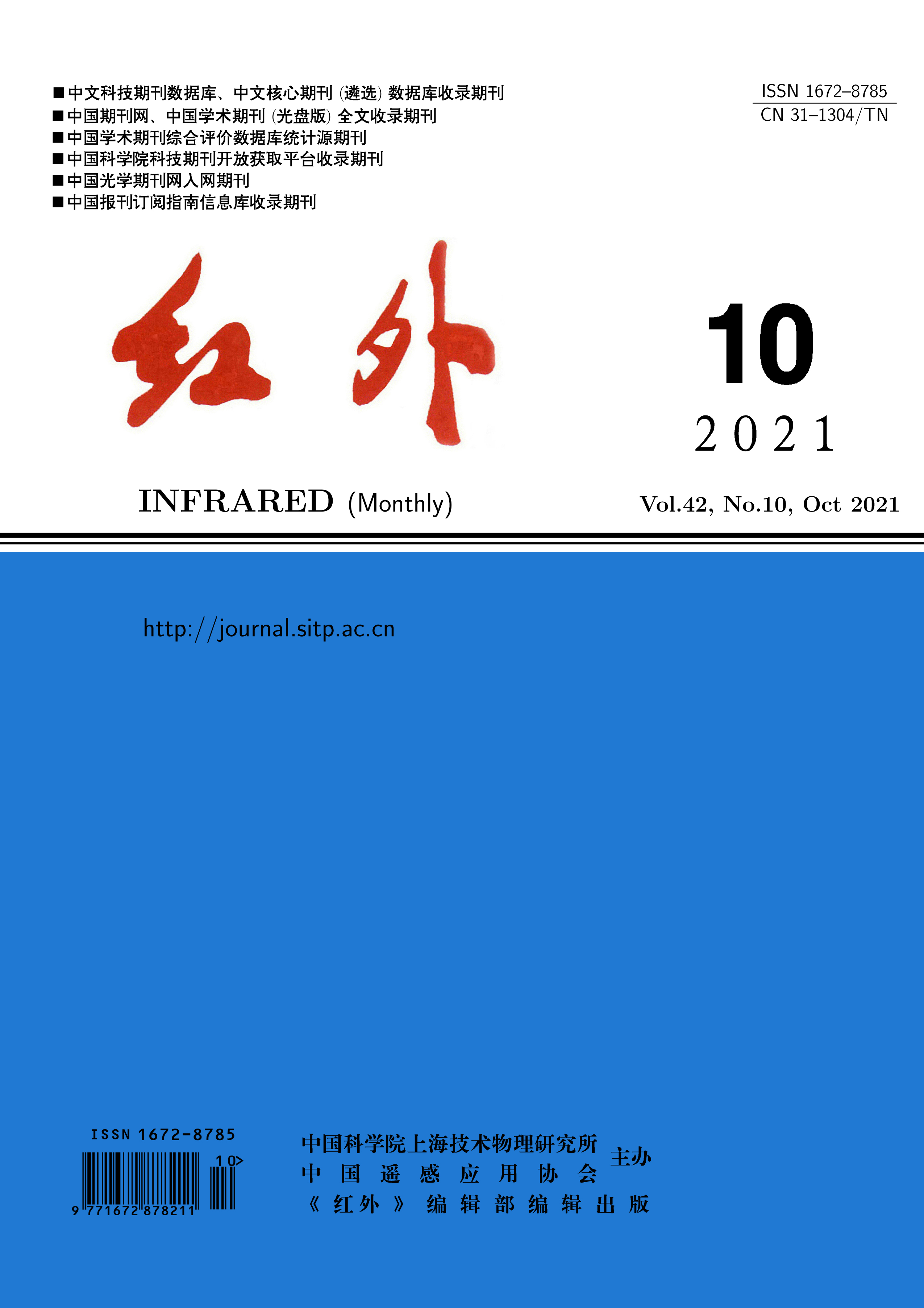
Aiming at the problem that the calculation quantity and accuracy are incompatible during the thermal stress simulation analysis of large area array mercury cadmium telluride chips, an optimization simulation model for coupled thermal stress is established by introducing small-scale indium column arrays at different positions in the interconnection area of the chip. Thermal stress analysis using this model shows that significant thermal stress is generated near the upper and lower surfaces of the indium column, while greater thermal stress is generated inside the array element at the edges and corners,up to 22569 MPa. Furthermore, the structure of the chip is optimized to obtain the optimal readout circuit and zinc-cadmium tellurium substrate thickness. In addition, the simulation results show that single-sided indium is an indium column structure with low thermal stress, and reducing the radius of the indium column can further reduce its internal thermal stress. The proposed thermal stress simulation optimization model provides a more accurate and effective analysis method and device design′s theoretical guidance for the thermal stress analysis of large area array mercury cadmium telluride chips.
The Indium antimonide (InSb) focal plane detector is a kind of detector widely used in the field of medium-wave infrared detection. As the basis for preparing detectors, the quality and performance of InSb crystal materials are particularly important. In recent years, InSb crystal materials have been also developing towards high quality and large size. Through crucible design and temperature field design, InSb single crystals with a diameter greater than 135 mm were grown by the Czochralski method. The test results show that the dislocation density of the 5-inch wafer is less than 50 cm-2, and the full width at half maxima of the double-crystal diffraction peak is 832 arcsec, indicating that the crystal has good integrity. By optimizing the process parameters, the crystal has a relatively flat solid-liquid interface during the growth process, showing good radial electrical uniformity. This lays a foundation for the preparation of InSb infrared detectors with low-cost and ultra-large scale arrays.
High quality substrate thinning process is developed for InAs/GaSb type-II superlattice infrared detectors to obtain high quality substrate surface and improve the quality of superlattice infrared detectors. A combination of mechanical polishing and mechanochemical polishing is used to thin the substrate, in which mechanical polishing reduces most of the thickness of the substrate, and then mechanical damage is removed through mechanochemical polishing. In the process of mechanochemical polishing, the influence of the pH value of the mechanochemical polishing solution on the surface quality of the substrate is mainly studied while the pressure, speed, and other factors remain unchanged. The experiment shows that when the pH value of the mechanochemical polishing solution is 94, a high-quality and low damage substrate surface is obtained, and the imaging effect of the detector component is the best.
In order to realize the full range and high-precision 3D measurement of small objects, a high-precision 3D measurement system using structured light illumination is constructed. The double telecentric lens, phase solving method and multi-projection point cloud fusion algorithm used in the system are studied. Firstly, the image data is collected by dual telecentric measuring head, then the phase is solved by multi-frequency phase shift and complementary gray code phase shift, and the performance of the two methods in terms of reconstruction accuracy and reconstruction efficiency is analyzed and compared. Finally, the phase filtering method, the optimized statistical filtering method and the multi-projection point cloud fusion matching correction method are proposed for specific point cloud noise. The experimental results show that the system should choose different phase solving methods according to different scenarios. Compared with the single projection binocular system, the multi-projection based system can obtain the full picture of the target, and the precision of the plane and height measurement is less than 10 m. After GPU acceleration, the measurement speed is increased by 218 times. The system can basically meet the requirements of high precision and high efficiency of high precision industrial measurement.
With the continuous development of optical fiber sensing technology, fiber Bragg grating (FBG) vibration sensor has become more and more excellent in the performance of complex vibration measurement in practical applications. Based on the advantages of FBG vibration sensor, the working principle of FBG vibration sensor is described briefly, and the advantages and disadvantages of some cantilever beam, diaphragm and hinge structures developed in China in the past 5 years are introduced. Finally, four suggestions for FBG vibration sensors are put forward, and the development direction of FBG vibration sensors is prospected.
Infrared image target recognition is of great significance to criminal investigation, but the resolution of criminal cases demands high requirements in terms of time and confidence coefficient. It is of great research value to design a lightweight target recognition algorithm of infrared criminal detection image to maintain excellent recognition accuracy and high recognition speed at the same time. Therefore, the excellent characteristic of biological immunity is drawn on and the immunogenic deep neural network algorithm is designed. The algorithm constructs innate immune network and adaptive immune network to extract image features. Then an immunogenic network enhancement algorithm is implemented to adjust the priority between different channels when processing image feature mapping, so as to improve the accuracy and speed of the algorithm. Experiments show that the proposed algorithm can effectively realize the fast and accurate recognition of infrared criminal detection images. When compared with VGG16, VGG19, Resnet34, Resnet50, MobilenetV2 and other models, the proposed algorithm not only achieves the highest test accuracy of 994%, but also has the fastest recognition speed.








